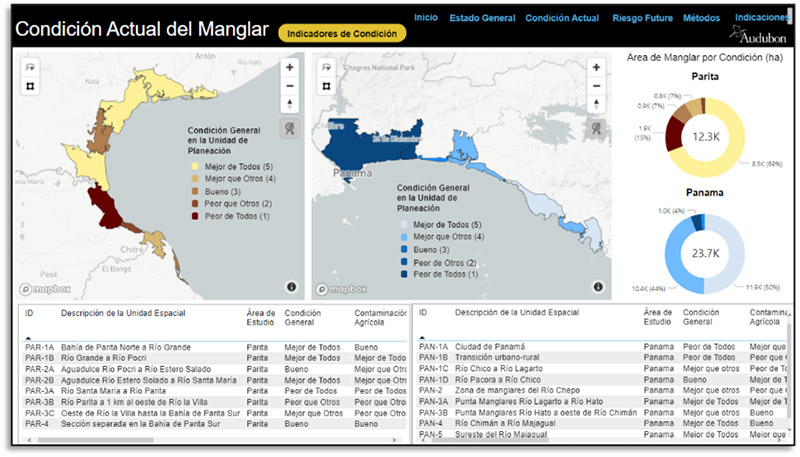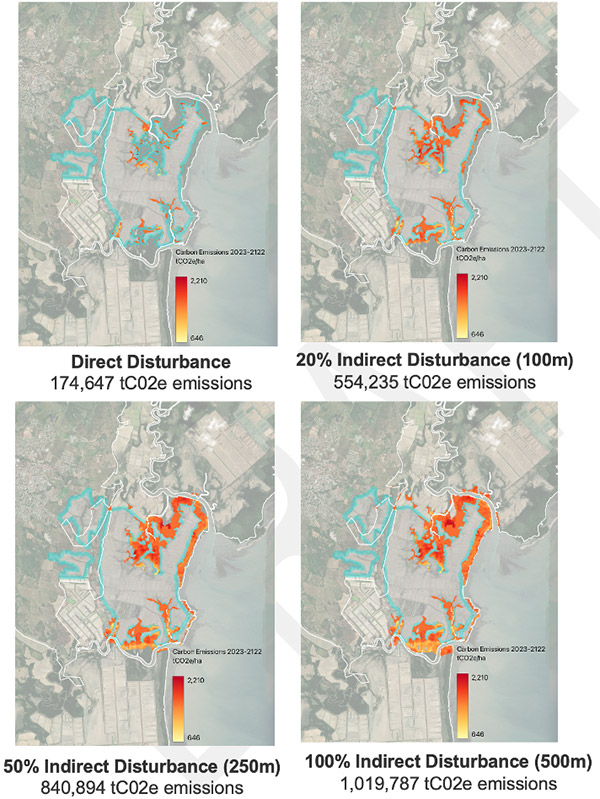Ecosystem Service Provision by Mangroves in Panama
Project Details
Location: |
Panama, 9.22144, -79.55891 | |
Client: |
Audubon Americas | |
Duration: |
July 2022 – August 2023 | |
Team Member(s): |
Cedar Morton, Jimena Eyzaguirre, Frank Poulsen, Matt Bayly, Shreya Nemani, Curtis Quirion | |
Practice Area(s): |
Nature Based Solutions | |
Services Employed: |
Ecological modelling, GIS analysis, Facilitation and engagement, Natural asset inventory, Natural asset planning and decision support, Risk and vulnerability assessment, Economic assessment, Science communication |
The Problem We Aimed to Solve
Mangroves provide a wide range of ecosystem services that benefit humans and ecosystems, but these unique systems are under pressure globally from a variety of stressors. Panama has experienced high rates of mangrove deforestation due to logging, commercial development, forest conversion to shrimp farming and agriculture/livestock, tidal flooding, and contamination from industrial and agricultural inputs. To support improved environmental decision-making around mangrove management, Audubon Americas wanted to understand mangroves’ role in providing carbon sequestration, coastal protection (flood and erosion mitigation), and fish production services. Understanding these benefits makes tradeoffs and opportunity costs associated with mangrove deforestation more transparent.
How We Helped
ESSA delivered our full natural asset service package to assess ecosystem service provision by Panamanian mangroves on the Pacific Coast. Our approach to natural asset management is designed to be consistent with the United Nations System of Environmental Economic Accounting (UN SEEA) and the widely applied Total Economic Value approach to assessing contributions of ecosystem services to human welfare. Our service package includes: 1) natural asset inventory, 2) condition/risk assessment of natural assets, 3) quantification of baseline (current) service provision, 4) development of target levels of service, 5) development and modelling of management alternatives, and 6) economic valuation of ecosystem services.
Our Project’s Impacts
We produced an initial policy, legal, economic, social, and environmental literature synthesis as well as an interactive web-based dashboard that presents the asset inventory, its overall ecological status, and its condition and risk across mangrove planning units. We then assessed mangrove provision of carbon sequestration, coastal protection (flood and erosion mitigation), and fish production using biophysical modelling. Modelling tools used to quantify ecosystem service provision by mangroves included the peer-reviewed Blue Carbon model from Stanford University’s InVEST suite of ecosystem service models, the InVEST Coastal Vulnerability model, and an ESSA-adapted version of the InVEST Coastal Protection model (“Coastal Toolbox”). We assessed baseline levels of service provision and worked with Audubon and project participants to develop alternative management scenarios, which we modeled and compared to the baseline. Outputs included biophysical and economic metrics. Results contributed to building a rationale for conservation and protection of Panama’s mangroves, highlighting their contribution to human wellbeing, and providing evidence to influence changes in policies and the behavior of mangrove beneficiaries.



